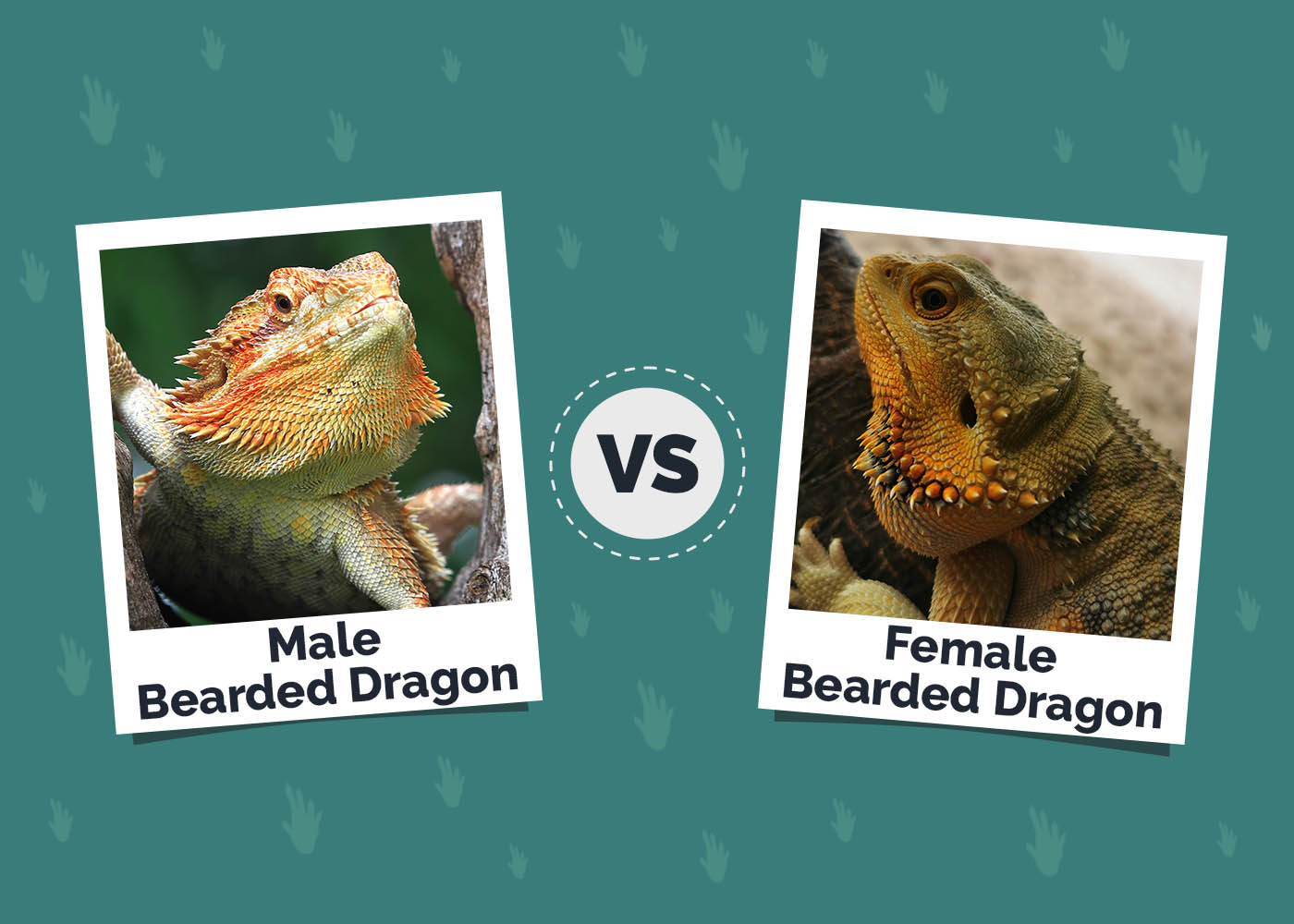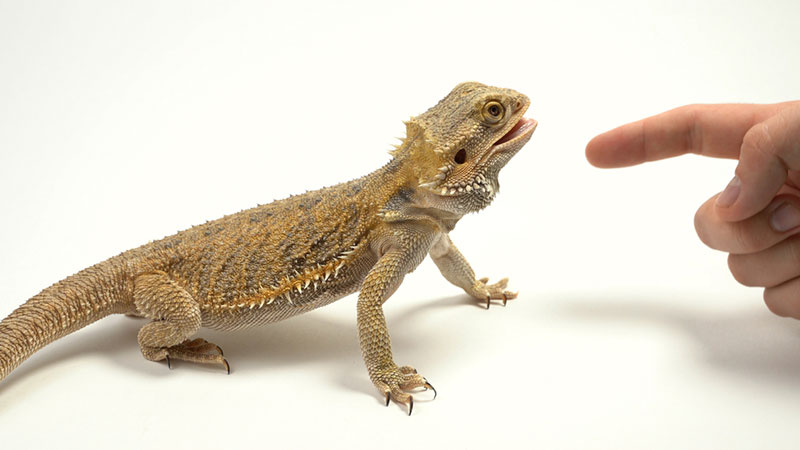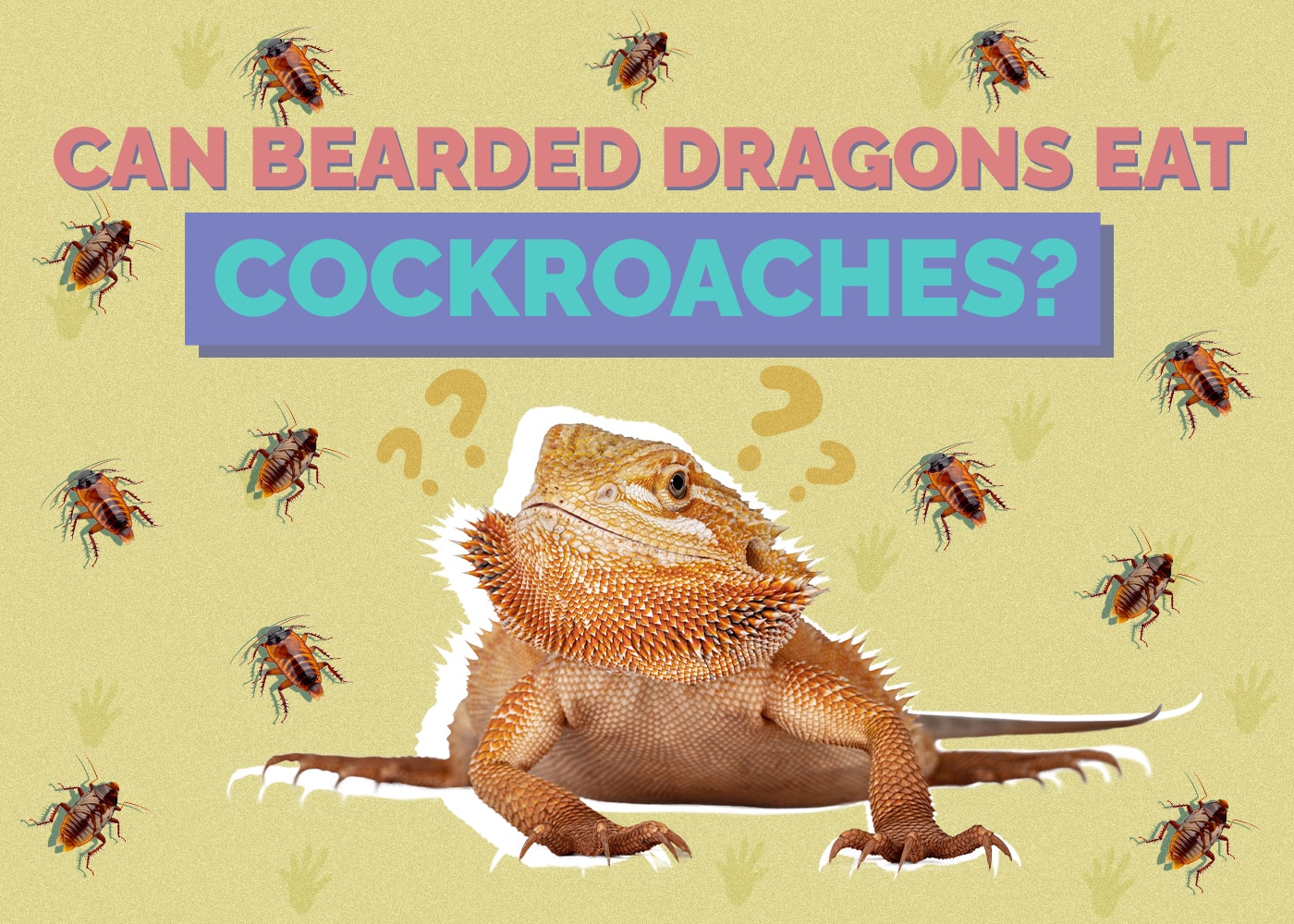Uromastyx vs. Bearded Dragon: The Differences (with Pictures)

Updated on
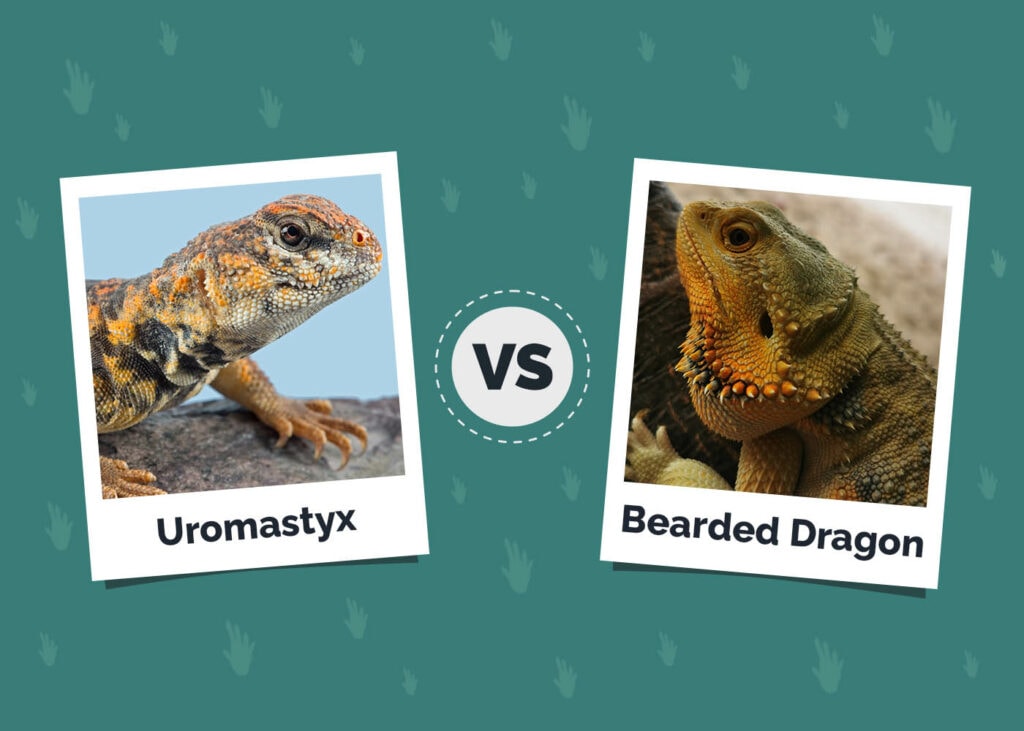
Click to Skip Ahead
Uromastyx and Bearded Dragons both make great pet reptiles and there are similarities between these two species. Although it depends on the exact species and the individual lizards, both species can grow to around 16 inches. Both need a moderate-sized tank and neither species is especially prone to biting people.
However, the Uromastyx will live a little longer than the Bearded Dragon, with good care, but the Bearded Dragon is more tolerant of handling. And while the Bearded Dragon is an omnivore that needs to be fed live insects, the Uromastyx is vegetarian so is better for those owners that aren’t comfortable with tubs of live insects in their home.
Below, we look at these two species of reptile to help you determine which would make the best pet for you and your home.
Visual Differences

At a Glance
- Average length (adult): 15–36 inches
- Average weight (adult): 4–30 ounces
- Lifespan: 10–25 years
- Tank size: 75 gallons+
- Tolerant of Handling: Not usually
- Diet: Herbivore
- Average length (adult): 10–24 inches
- Average weight (adult): 10–20 ounces
- Lifespan: 10–15 years
- Tank size: 60 gallons+
- Tolerant of Handling: Yes
- Diet: Omnivore
Uromastyx Overview

Uromastyx live in the desert regions of Asia and North Africa. They dig burrows in the sand and have a number of unique features. Their tail is spiked, and they use this to strike at predators to prevent them from attacking. They live in high heat, which will need to be replicated in captivity, and handle very high temperatures without needing to drink. They get most of their water from the vegetation that these herbivores eat. A lot of the vegetation that the lizard eats contains salt and the Uromastyx has developed glands in its nose that eject excess salt.
Appearance
The Uromastyx is also known as the spiny-tailed lizard because it has spikes on its tail, which are used for defense against predators. They have inquisitive-looking expressions and heads that look similar to those of tortoises. Different species of Uromastyx have different colorations and there is a great variety of different markings and colors to choose from.
Personality
These lively little lizards do enjoy running around and are very active reptiles. They can also be quite skittish, burrowing into the substrate of their tank if they get spooked. They are diurnal, though, which means that they are more active during the day. Their nervousness means that Uromastyx are not the best species if you want a reptile you can easily handle. With time and effort, yours may tolerate it for short periods, but this isn’t always the case.
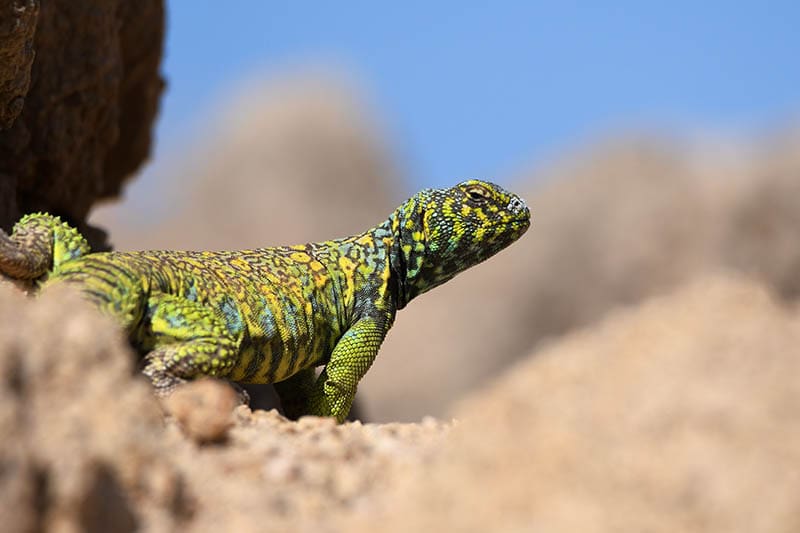
Habitat
The speed and energy level of the Uromastyx means that it does need quite a large cage. One adult will need at least a 75-gallon tank, and if you can provide more space then that’s even better. These arboreal lizards do like to climb so you will want a tank that gives some vertical space, although more horizontal space is better for running. Uromastyx come from very hot deserts, and they need high temperatures and a lot of UVB light to replicate these conditions. They need low humidity, too. Getting the right tank setup can be one of the more challenging aspects of owning one.
Health & Care
Uromastyx do not drop their tails, but like all lizards, they do shed regularly. Shedding occurs as the lizard grows because reptile skin cannot stretch. Because younger lizards grow quicker, you can expect more frequent sheds from juveniles with the frequency dropping off as the reptile ages. Common health problems come from malnutrition and poor living conditions, although this species is also somewhat prone to internal parasites so regular stool testing can be beneficial.
One of the benefits of the Uromastyx as a pet is that it is an herbivore, which means you don’t have to feed live insects or small mammals.

Suitable For:
Owners that want an observational pet, rather than one that can be handled, and that have the time and energy to research appropriate habitat requirements.
- Doesn’t drop its tail
- Diurnal so active during the day
- No need to live feed
- Not usually tolerant of handling
- Habitat requirements are challenging
Bearded Dragon Overview
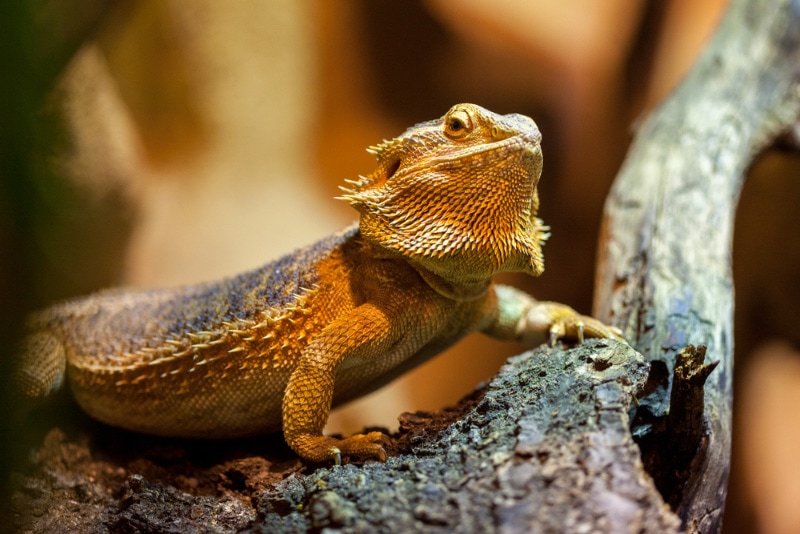
All wild Bearded Dragons originate in Australia. There are several different species, and they live in a variety of different habitats including deserts and woodlands. They can also be seen in urban areas, having adapted to town and city life. They are used to high temperatures and, in the wild, they are often seen basking in the sun on top of tree stumps and rocks. As with any pet, but especially reptiles, it is important that you replicate the Bearded Dragon’s wild habitat in their enclosure.
Appearance
Bearded Dragons are very recognizable because of their popularity as pets and their names. Beardies have spiked beards that protrude from beneath their heads, and they also have spikes around their bodies. The spikes are not sharp, but they are used as a defense against predators, and if your pet Beardie becomes scared or is spooked, the spikes may become erect. There are lots of different colorings and markings, with breeders especially keen on breeding those with bright colors.
Personality
One of the reasons for the popularity of the Beardie as a pet is their tolerance of handling. They are arguably the most friendly and amenable of pet lizards. Start handling when your Bearded Dragon is young, and it will take to being picked up throughout its life. As your Beardie becomes accustomed to you, it will likely want to spend more time sitting on your lap or shoulder while out of its enclosure. They rarely bite and don’t usually cause injury even if they do.
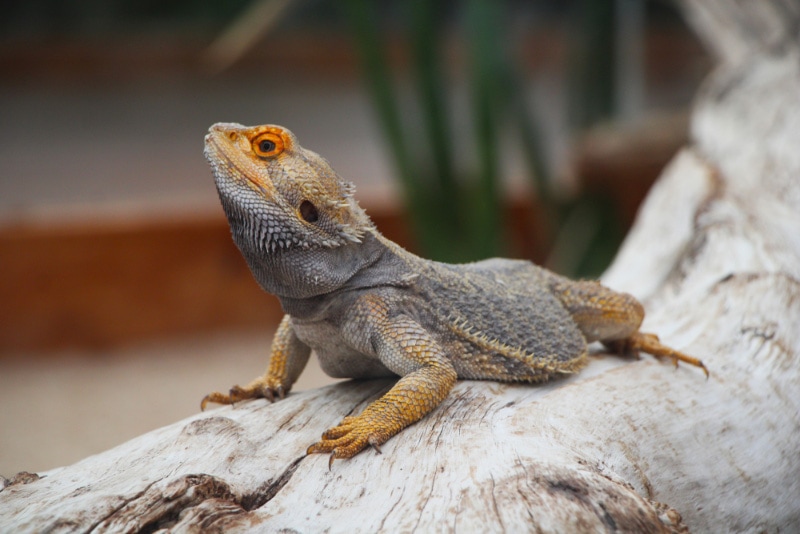
Habitat
Like the Uromastyx, the Bearded Dragon needs a moderate-size tank. A single adult needs at least 60 gallons of space, and ideally 75 gallons or more. A larger tank makes it easier to provide the gradient of heat that your Beardie needs, and it will prevent boredom and stress. Bearded Dragons need high temperatures, although not usually quite as high as the Uromastyx, and they also need high levels of UVB as well as humidity levels between 20% and 40%.
Health & Care
You do need to ensure that Beardies get appropriate light, heat, and humidity levels because they can get very ill if these needs aren’t met. They are omnivores, too, which means they need to be fed live insects as well as greens. The insects should be gut-loaded, and it is a good idea to dust their food with calcium and vitamin D supplements to ensure they stay healthy. This species sheds quite often but its tail doesn’t drop.
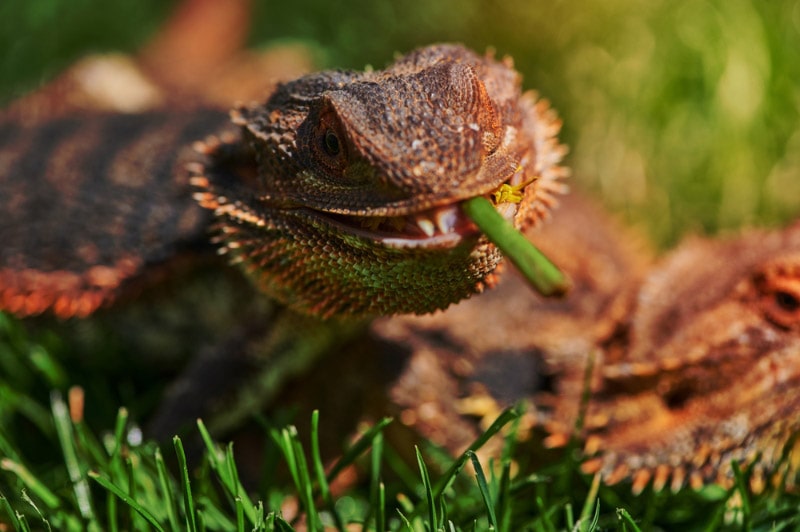
Suitable For:
First-time reptile owners that want a docile lizard that tolerates being handled. However, the live feeding may put some potential owners off.
- Tolerate and even enjoy being handled
- Diurnal, so active during the day
- Doesn’t drop its tail
- Needs to be fed live prey
- Needs UVB, high temperature, and suitable humidity
The Differences Between Uromastyx & Bearded Dragon
Best for Beginners
Bearded Dragons and Uromastyx are considered good lizards for beginners. The Bearded Dragon is more tolerant of handling and not as skittish as the Uromastyx, which makes it the better choice for those who want a friendly reptile. But the Bearded Dragon does need to be fed live insects which can be off-putting for a lot of potential owners.
Habitat Requirements
Both species need a moderately sized tank, although the Uromastyx does benefit from a slightly larger tank because it is fast and enjoys running. The Uromastyx also needs higher temperatures, and its enclosure needs to be kept at a lower humidity. Both have similar UVB requirements.
Lifespan
Although it does depend on the individual animal and how well it is kept, the Uromastyx generally lives a little longer than the Bearded Dragon. While Beardies will usually live around 10 years, Uromastyx will live for 15 years.
Diet
One of the big differences between these two species of reptiles is their diet. Uromastyx are herbivores so they do not need to be and shouldn’t be fed meat. If you are squeamish, don’t like the idea of feeding live insects, or don’t want to risk the possibility of crickets or roaches escaping in your home, the Bearded Dragon may not be the best choice of pet for you.
Availability and Cost
Bearded Dragons are the most popular pet reptile species, and while it is now illegal to export Beardies from Australia, there is a huge population of captive Beardies and an active breeding program that means this species is very easy to acquire. It also means that Bearded Dragons are inexpensive, although some of the rarer morphs can cost more. Uromastyx are more difficult to find, and they will cost more.
The Uromastyx also has higher temperature needs and needs a bigger enclosure, so the initial costs tend to be higher. But, because they only eat vegetables, the ongoing costs are a lot cheaper.
Which Breed Is Right for You?
Whether the Bearded Dragon or the Uromastyx is the right species for you will usually depend on availability and your willingness to feed live insects, but also whether you want a lizard that tolerates being handled. The Bearded Dragon is a good choice for those who want a pet they can pick up and bond with while the Uromastyx is the better option for owners who don’t want to feed live insects or small mice to their pets.
If cost is a factor, the Beardie costs less initially but will cost more on a monthly basis because of the higher cost of buying insects.
Featured Image Credit: (L) davemhuntphotography, Shutterstock | (R) Tay Chee Keong, Shutterstock

